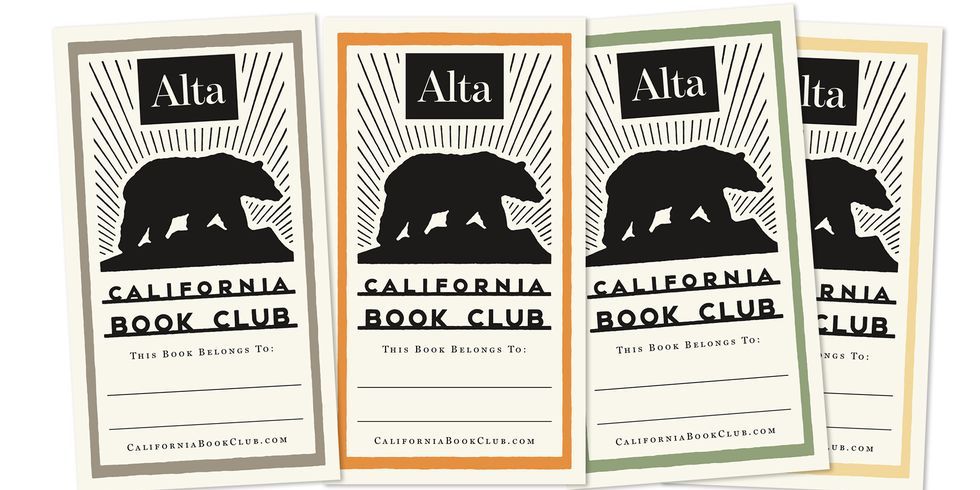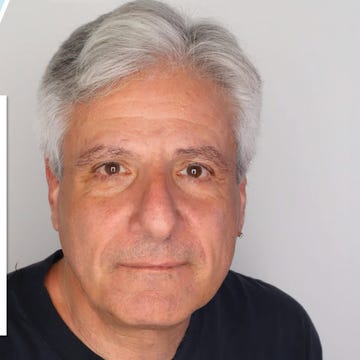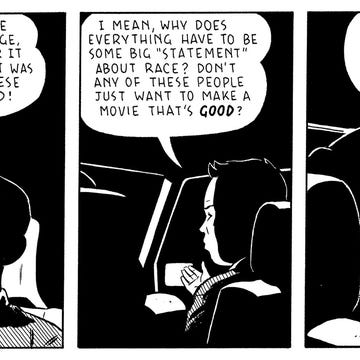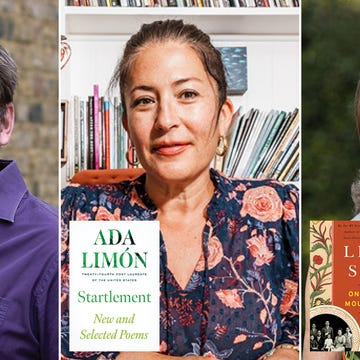I have spent the better part of my 45 years along Highway 99 in Elk Grove. My corner of the Central Valley lies just off the Bond Road exit, south of Sacramento. This is the part of California that outsiders don’t know about, even though they rely on it. We are the elongated green bowl cupped by the Sierra Nevadas and the coast. A temperate Mediterranean zone of riverbeds that’s good for growing just about anything and that yields about one-quarter of the nation’s food and produce. Ours is a valley of trees and vines and crops. Drive south from here and you’ll encounter—as poet Sara Borjas writes—“the rows / horizoning the earth’s still dust like corduroy.” Oaks rising from the tule fog. Flooded riverbeds. Corn. Grapevines. Almonds. Pistachios. Stone fruits. The California that keeps you alive.
In “Notes from a Native Daughter,” perhaps the most celebrated account of California’s Central Valley, Joan Didion writes of driving the oleander- and eucalyptus-lined artery. She says, “The Valley towns understand one another, share a peculiar spirit.” I agree with that, but I bristle at her description of Highway 99 towns as “the same at heart, one- and two- and three-story buildings artlessly arranged.” It’s so unloving. Manuel Muñoz’s work beautifully complicates the writing of Didion and others about Highway 99 towns—offering the vibrancy of lives rather than a simple view of our buildings. Muñoz trains his lens on the faces who live down the freeway exits that most people just pass on their way to somewhere else. These faces make up the California that gets lost in national shorthand. Their truth belies our reputation as a monolithic coastal-elite state.
Didion bemoans an affected kind of Sacramento grace, which she felt was already waning by the 1950s. Muñoz shows us that that grace never left the orchards; it’s in the persistence of those who cull fruit from the fields, coloring their DNA for generations. Didion mentions the low, haphazard towns to tee up another point about the Central Valley’s indifference to the rest of the country. But it’s notable to me that the Native Daughter wrote of the Golden State Highway as only a smooth path through unpeopled farms. And don’t get me wrong—Didion’s writing on Sacramento is right. But it’s also important to acknowledge that she never came back. Hers is a kind of Valley writing that looks inward. Authors like Muñoz enhance the portrait of life along Highway 99 by sketching the state as a paradoxical land of plenty dependent on an exploited people willing to do grueling, thankless work.
Muñoz’s rich fiction exists in conversation with many others who’ve written about the Valley in this way. It talks back to Didion by enlivening what she saw outside her car window, putting faces in the homes of those small towns. Muñoz pulls off the highway and the single-lane roads. He stands alongside writers like Anthony Veasna So, the late author of the collection Afterparties who illuminated the resilience of Stockton’s Khmer community by detailing the trials and dreams of individuals living in the urban sprawl. Both So and Muñoz pull our focus away from the gentrified city elite, the powerful haves. Their work argues against a thesis of suburban or rural narratives as less than. They center quiet and determined work in their stories. We also see this philosophy of the Central Valley in Rishi Reddi’s Passage West. Though it focuses largely on South Asian farmers in the Imperial Valley, Reddi’s World War I–era novel also travels north to Stockton, where it details the founding of the first Sikh house of worship in the United States. It’s So’s and Reddi’s words I think of when I pass Stockton’s low skyline, Muñoz’s words as I drive south.
Muñoz’s California is full of light and shade, particularly when he writes about Fresno and its neighboring towns. These stories ask questions about those living and traveling along our main thoroughfare in small towns that exist out of necessity. Muñoz’s stories like “Anyone Can Do It,” “Susto,” and “Fieldwork” show desperation, the insular nature of little communities, hope in the face of hardship, and the honor of work in the orchards. Writer and peach farmer David Mas Masumoto writes in his 2023 memoir, Secret Harvests,
I farm with ghosts. They live in our fields. Each peach tree has pruning scars from the generations who worked these orchards. Every vine has been shaped by the hands of workers who returned each year to add their touch to the sculpture. People and their families have etched their marks on my farm, and I, too, hope to leave behind a simple signature on this seemingly ordinary landscape.
Muñoz writes with these same ghosts. He gives voice and urgency to their desires and their joy.
Fresno, in Muñoz’s The Consequences, represents a place of stability, even as Muñoz presents it in contrast to larger or more-metropolitan California cities. In “Presumido,” Juan and Daryl prepare for a housewarming party. “It was a long way from the poverty of scalped yellow grass and dirt driveways,” Muñoz writes, “the houses that both he and Daryl had grown up in…the small towns where they had once lived—Orange Cove, Cutler, Ivanhoe, Traver—Juan would never hear them speak of those places again.”
Fresno is large, but it maintains the spirit of a Central Valley town. Like Stockton to its north, it has expanded exponentially since the ’80s and ’90s of Muñoz’s stories, but it’s still a city defined by its agricultural nature.
The towns along Highway 99 aren’t a path to another place. Muñoz tells stories—Mexican American and Mexican stories—that largely go untold. In “The Reason Is Because,” a teenage mother laments that she “had nowhere but here.” The Valley offers something different depending on who you are.
People in Muñoz’s towns measure themselves “by the years they did or didn’t go to high school and the circles they ran in.” Me too. This is a place where, as Muñoz writes, “[not] everything [has] to be visible to be possible.” Muñoz shows how fertile with dreams and possibility the Central Valley is. Even when a story is complex, it’s good. These stories feel like home.•
Please join us on Thursday, February 20, at 5 p.m. Pacific time, when Muñoz will sit down with CBC host John Freeman and special guest Talia Lakshmi Kolluri to discuss The Consequences. Register for the Zoom conversation here.
MILLION-DOLLAR TEMPLE
Contributing editor David L. Ulin reviews the reissue of Rabbi Burns. —Alta
HISTORY OF AN L.A. SUBCULTURE
Charlie Haas, author of The Current Fantasy, writes about discovering the influence of Naturmenschen in Los Angeles. He will be at Bird & Beckett in San Francisco to discuss the book this Thursday, February 13, from 7 to 8:15 p.m. —Alta
SHOPPING LOCAL
Bookshop.org has launched an e-reader platform that allows independent bookstores to sell e-books. —USA Today
PERSONAL COMPUTING HISTORY
Jessica Zack interviews Bill Gates in connection with the first of his three autobiographies, Source Code: My Beginnings. —San Francisco Chronicle
WORDS OF PRAISE
Prior CBC special guest Rebecca Makkai writes about taking a break from providing blurbs. —New York Times
ARTISTS’ PANEL
On February 15, from 4 to 7 p.m., at Pomona College, author Jonathan Lethem (Cellophane Bricks) and artist Solomon Salim Moore will host artists Julia Jacquette and Mark Johnson for the opening of Jonathan Lethem’s Parallel Play and One Last Thing Again. —Benton Museum of Art
Alta’s California Book Club email newsletter is published weekly. Sign up for free today.



















